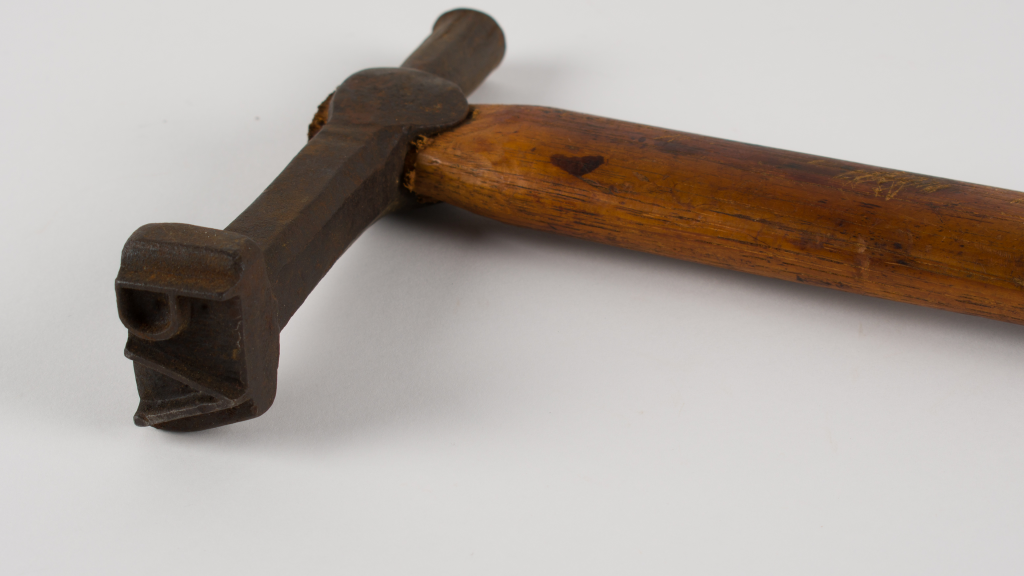
Paul Vonthien (1871–1945) the owner of this marking hammer, was one of twelve children born in Jindera to Carl (1833–1908) and Helene Vonthien (née Lindner 1834–1878). Paul was to follow his brother Carl Heinrich (Harry) to the Western Australia gold-fields in the mid–1890s, and stayed on after Carl died in Fremantle in 1895. After a […]
Read More…
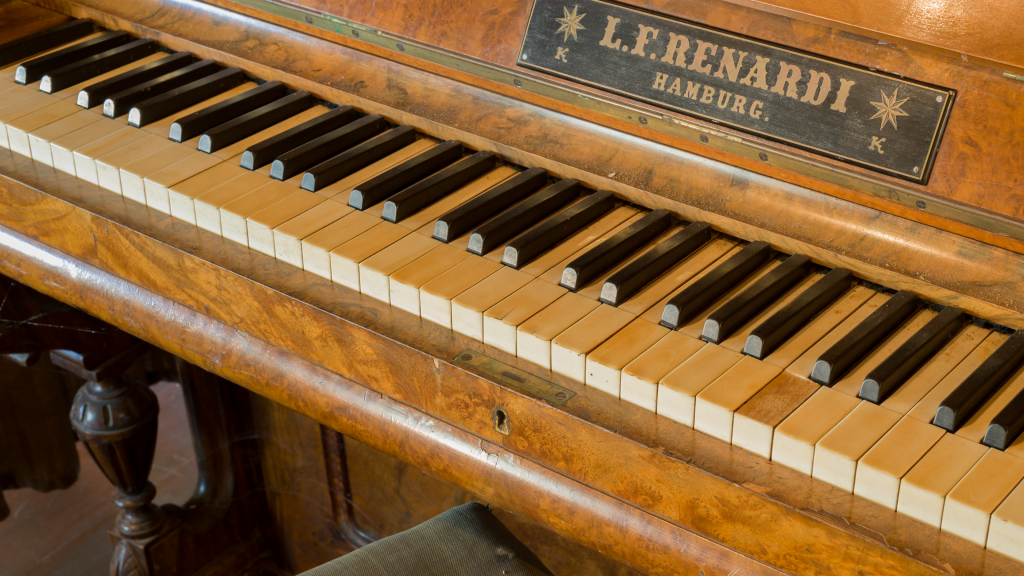
Before the invention of radio, television and social media, entertainment was home-made and to this end the piano was an essential piece of furniture in the home and community halls. This quite grand-looking Renardi piano was purchased in 1881 and was at the heart of entertainment in the household of Julius Herman (John) (1825-1914) and […]
Read More…
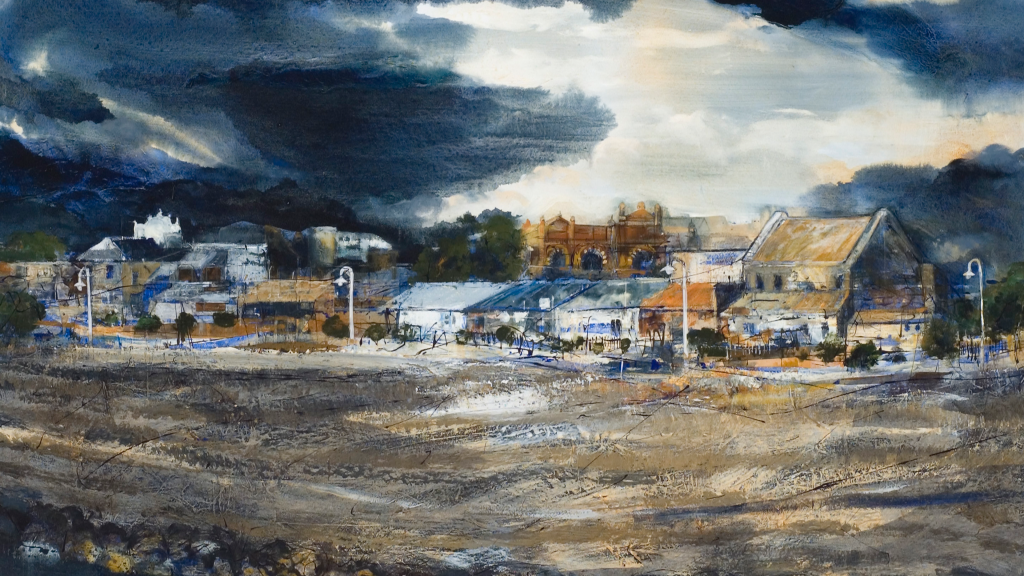
Judith White’s (1951-) view of the Hunter River at Maitland is painted in a most appropriate medium – watercolour. White has used the transparent washes of paint to suggest the smoothly gliding waters of the river and its reflection of the stormy sky above. The massing, dense clouds threaten to burst at any minute with […]
Read More…
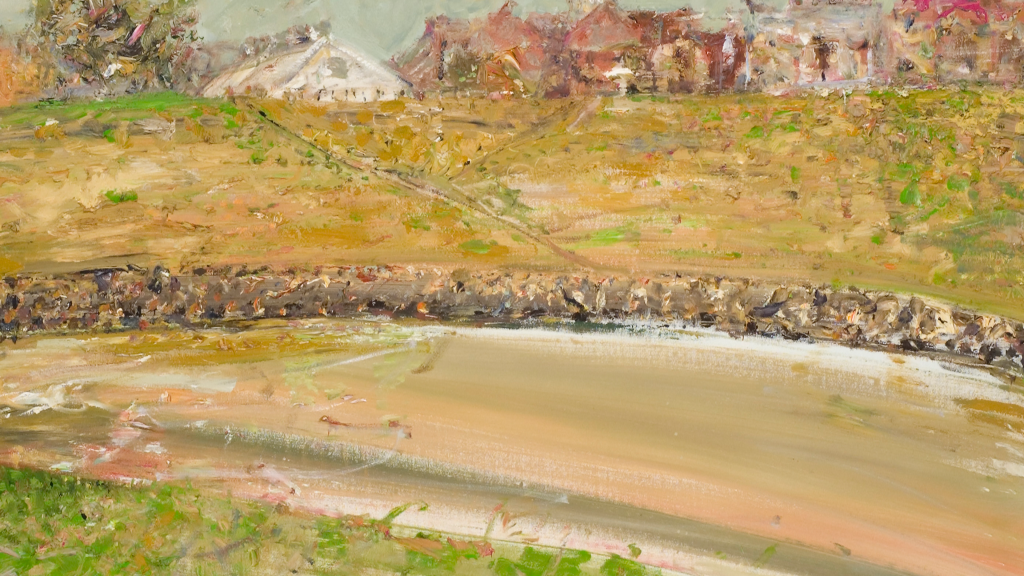
In On the bank John R Walker paints the banks of the Hunter River at Maitland. The rooftops and spires of the city fill the top quarter of the canvas while the expanse of the river dominates the painting’s middle section, painted in swipes of earthy olive to convey the muddy water and its reflection […]
Read More…
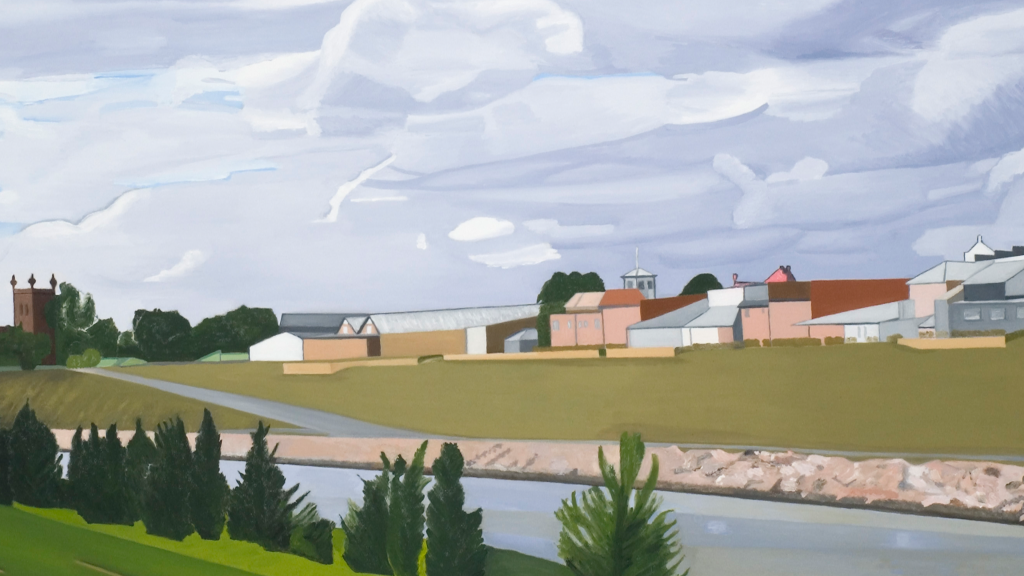
In high-keyed colour and with a light touch, Judith Ryrie (1934-) records an afternoon by the river at Maitland in a style she terms ‘graphic rural realism’. Ryrie is a Sydney-based artist, but she was born in regional Dubbo. Alongside eleven other artists, Ryrie painted this view for the exhibition View of Maitland from the […]
Read More…
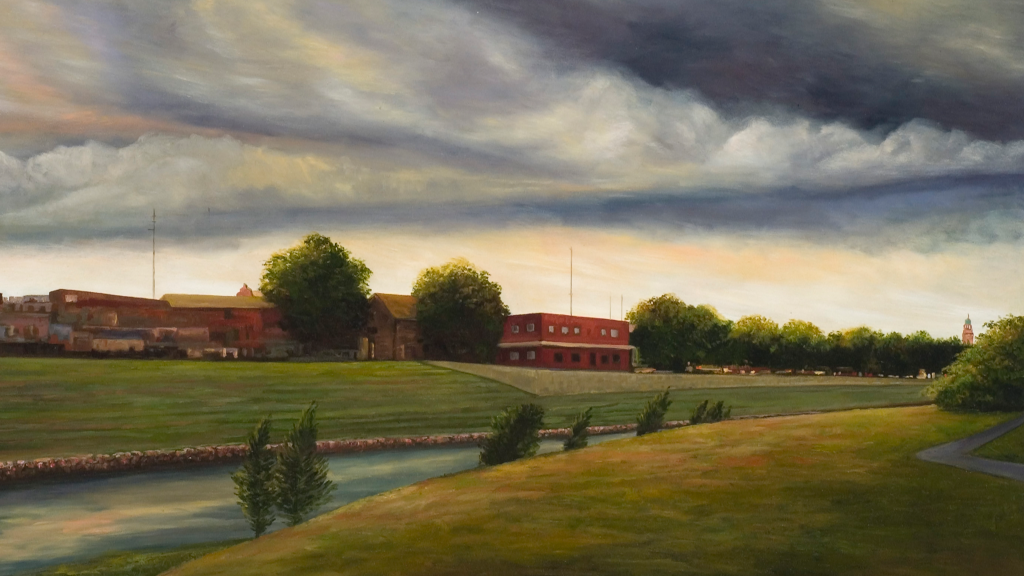
Perhaps Leo Robba’s (1962-) view of the Hunter River at Maitland was a presage of his future research. Since painting this view in 2006 for the exhibition View of Maitland from the riverbank (with apologies to Jan Vermeer and View of Delft) at Maitland Regional Art Gallery (MRAG), Robba has gone on to complete a […]
Read More…
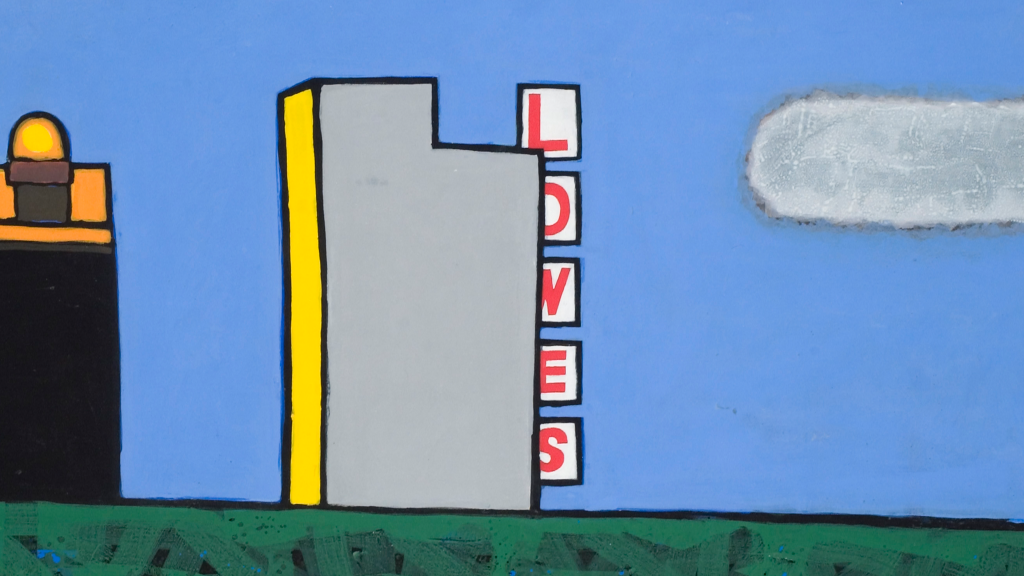
In his avowedly ‘selective’ view of Maitland from the riverbank, Peter Pinson (1943-2017) has created an abstract rendering of the natural and built forms of the city that simplifies them to their essence. Using acrylic paint, Pinson divides his composition into black-rimmed horizontals of river and bank, balanced by the vertical blocks of buildings. A […]
Read More…
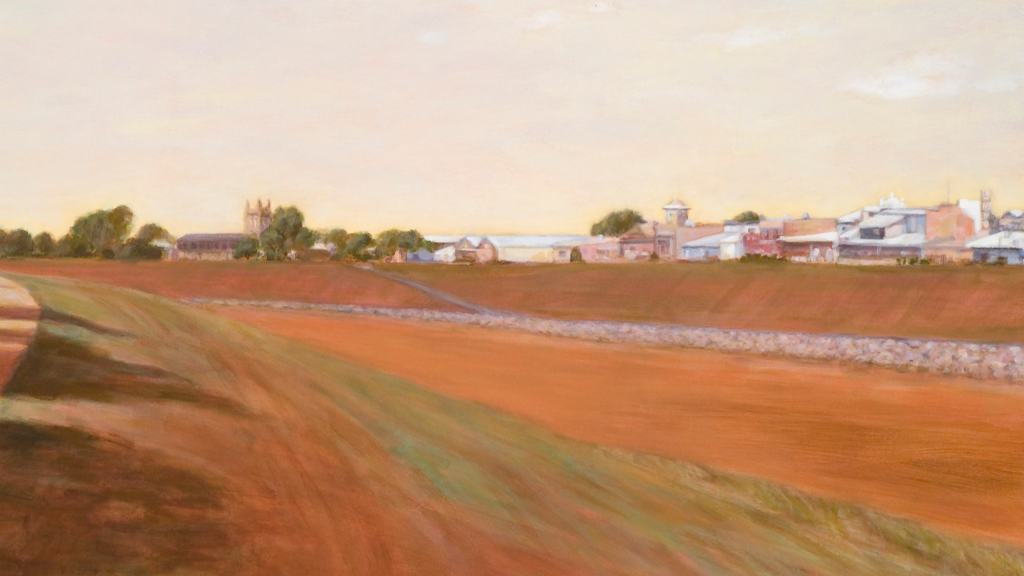
Claire Martin (1952-) has captured the curve of the levee bank as it rises above the Hunter River in Riverbank Path – Maitland (2006). The painting was commissioned for the exhibition View of Maitland from the riverbank (with apologies to Jan Vermeer and View of Delft) at Maitland Regional Art Gallery (MRAG) in 2006. Martin […]
Read More…
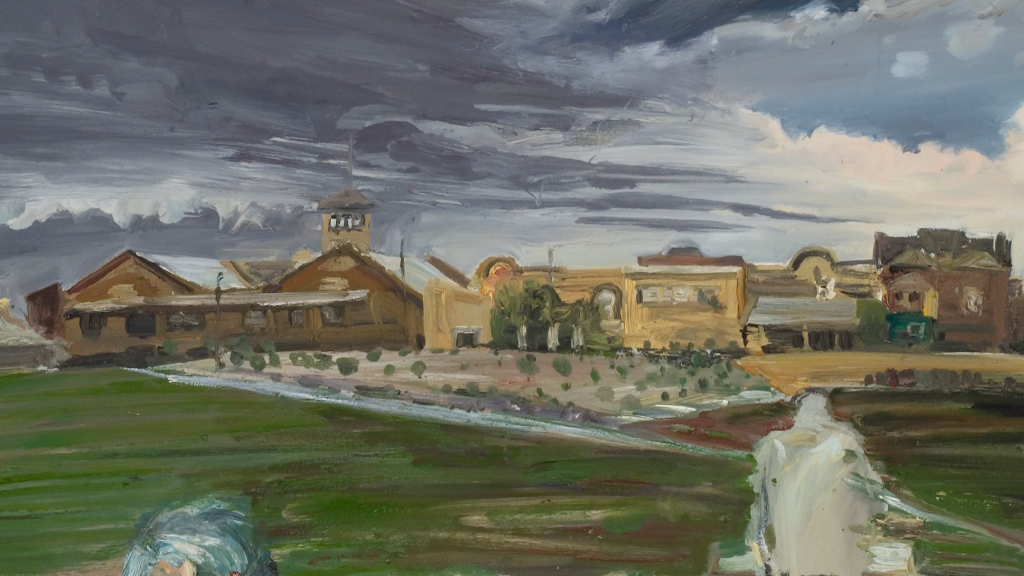
In his view across the Hunter River, Maitland – John and Leo (2006), Euan Macleod captures the energy of a gathering storm about to unleash its fury on two fellow artists painting the same view. Macleod paints the moment with an expressionistic spontaneity, using his palette knife and brush to capture the sky darkening over […]
Read More…
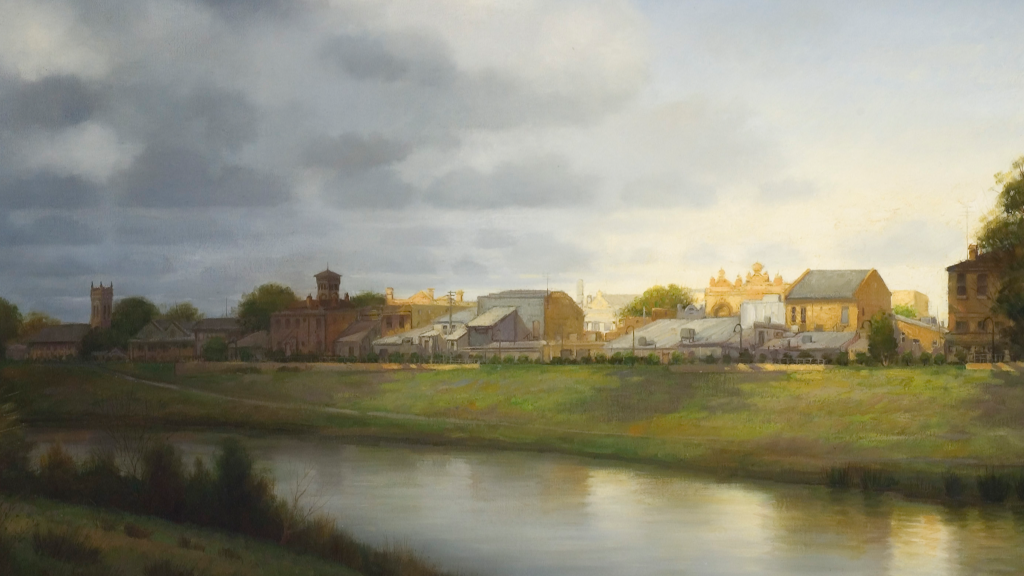
The influence of the Dutch Golden Age of painting is very clear in Alexander McKenzie’s (1971-) Cloud cover over Maitland, painted in 2006. Dutch artists of the seventeenth century conveyed pride in their flourishing cities in paintings such as View of Delft (1633) by Johannes Vermeer, which is the inspiration for this view by McKenzie. […]
Read More…











